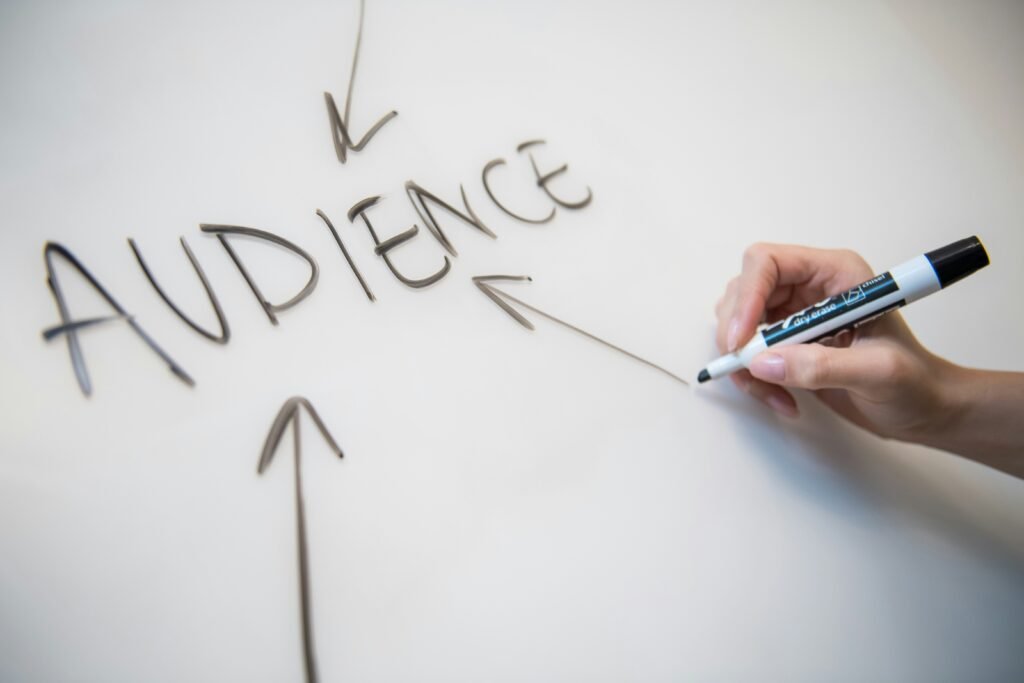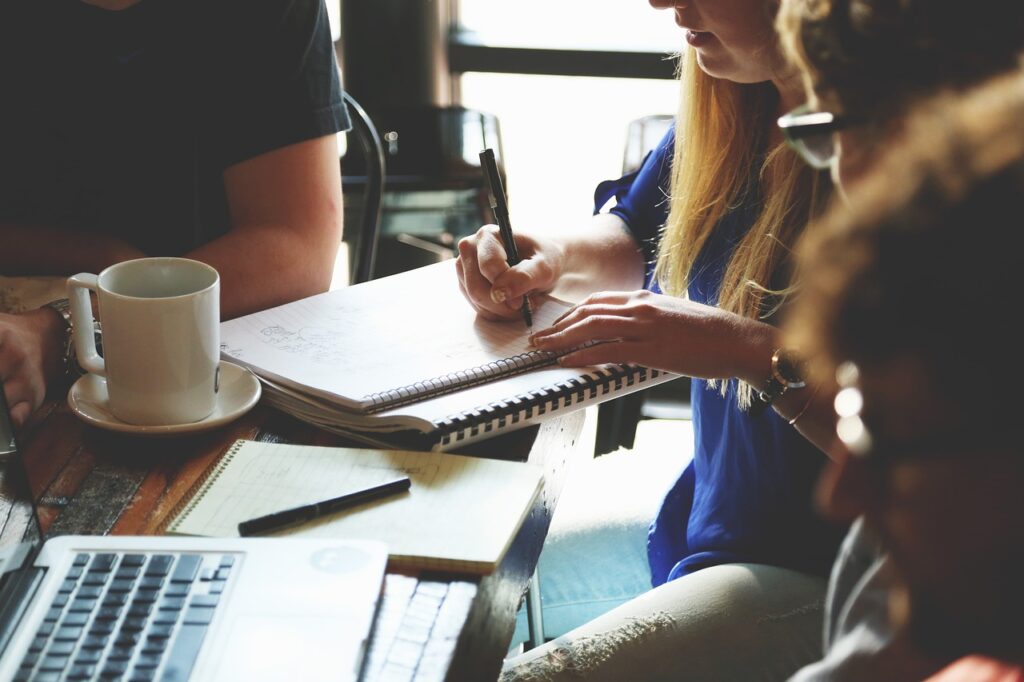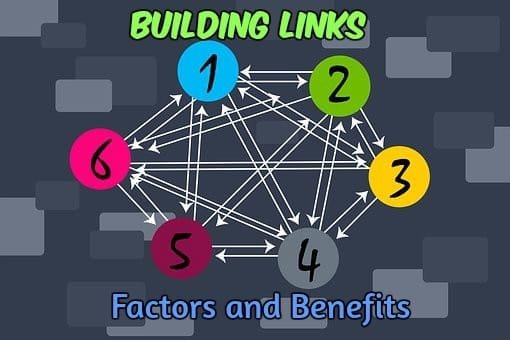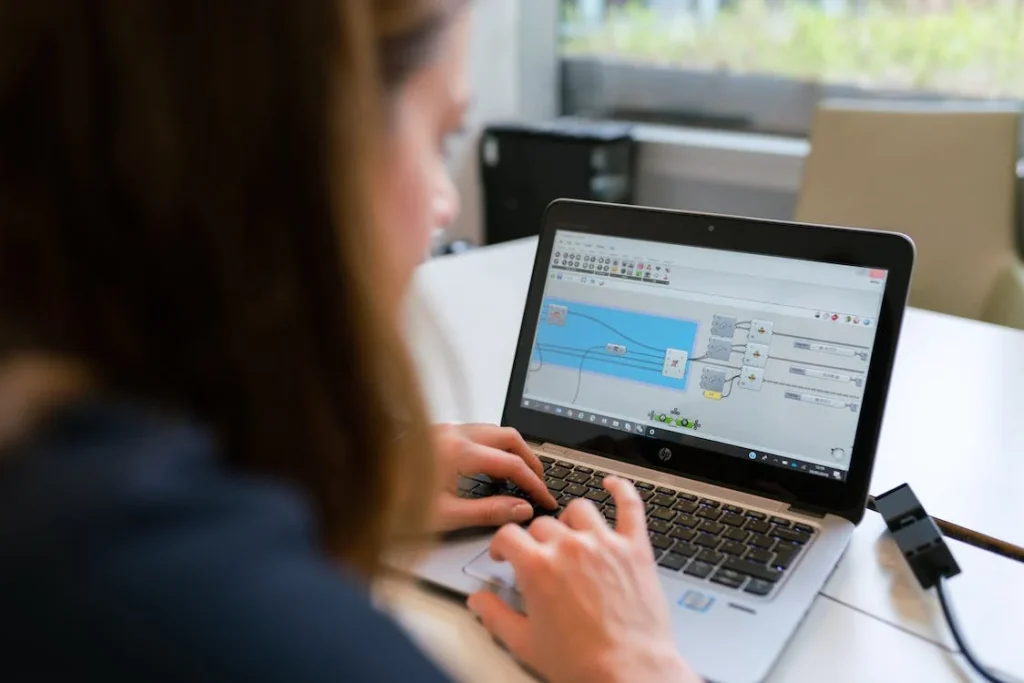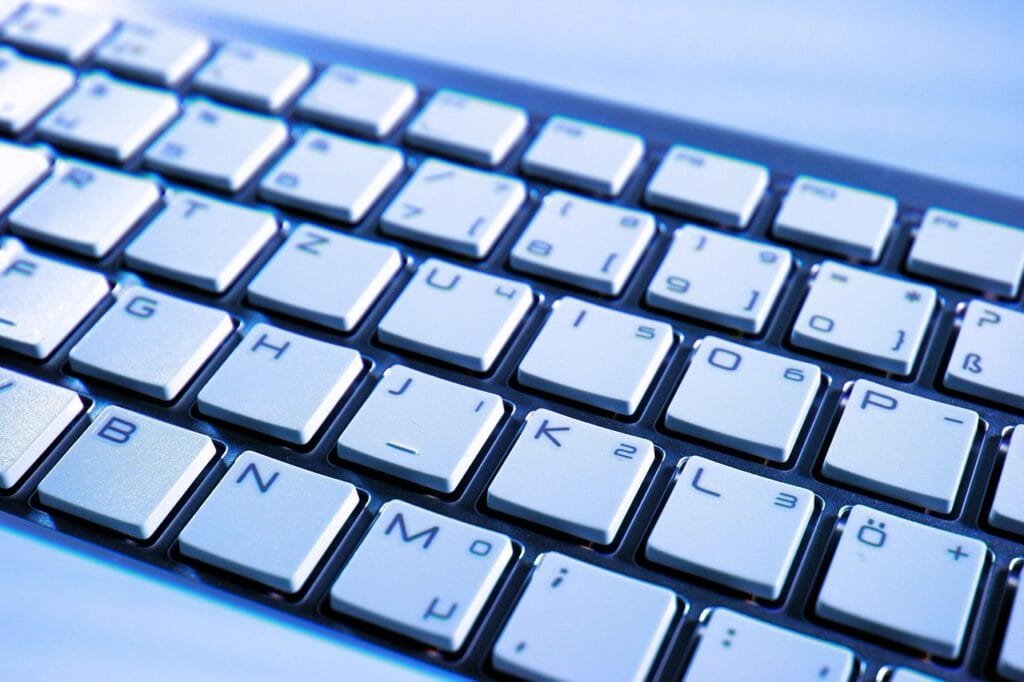Leveraging Social Media Mojo
Fashion bigwigs are catching on quick to the power of social media for shaping what you wear and who you tell about it. When used just right, Instagram and Twitter are not just apps on your phone—they’re your ticket to get brands noticed by the right folks.
How Instagram Flexes for Fashion
Instagram’s pretty much the runway of the digital world. In 2022, it stood out with 31% of users vibing with fashion and beauty (QuickFrame). It’s a space where brands can strut their stuff visually, sharing slick pics and vids that get folks double-tapping and chatting.
What’s more, Instagram’s home turf for influencers. These online trendsetters craft genuine content that jives with folks, letting brands slide into niche corners of the fashion scene. For the Gen Z and Millennial crowds, digital ads and organic posts are hot stuff—pulling them in by the droves, with a solid 31% and 29% impact, respectively (QuickFrame).
| Users Hangout | Fashion Fan Club (%) |
|---|---|
| 31 | |
| Snapchat | 35 |
| 30 |
Twitter as the Style Chatter
Instagram might have the glam, but Twitter’s where the style chat happens. With fashion catching the eye of 30% of its users, it’s the spot for up-to-the-minute fashion news and discussions. You can count on Twitter for the latest scoop and a lively exchange.
Twitter isn’t shy about keeping the convo going either. It lets brands chat back in real time, addressing queries or customer shout-outs as they pop up. This speedy back-and-forth breaks down barriers, forging a tight-knit sense of community between brands and their fans.
Brands can roll out cool hashtags and join the chatter to boost their presence and connect with dedicated fashion followers. Twitter’s a stage where PR magic and marketing meet.
Marketing gurus looking to ramp up, should deep dive into these platforms for their fashion marketing strategies and influencer marketing in fashion. Woven into your digital plan, these channels can amplify your voice and growth in today’s online hustle and bustle.
Sustainable Practices in Fashion
Sustainability in fashion ain’t just a buzzword anymore; it’s a must-have for shoppers and the planet alike. Let’s break down how folks feel about green threads and what’s happening in the world of second-hand treasures.
Consumer Sentiment Towards Eco-friendly Apparel
The word’s out: people are starting to sweat the small stuff when it comes to their closet. Seems like everyone’s jumping on the green bandwagon, with a whopping 78% feeling good about snappin’ up clothes with the “eco-friendly” label on ’em (Grin).
And get this, a big ol’ 87% are ready to ditch their usual brands for ones that fly the eco flag. Companies are feelin’ the heat, too, ’cause 60% of buyers are cool with walking away from brands that ain’t pulling their weight on the green front. Considering fashion’s got 8-10% of global carbon emissions hangin’ on its sleeve, it’s no surprise 15% of fashion bigwigs are putting sustainability way up on their to-do list (3DLOOK).
Here’s a quick look at how people are feeling about going green:
| Eco Vibe | % of Shoppers |
|---|---|
| Feeling good about eco-friendly buys | 78% |
| Ready to switch brands for green cred | 87% |
| Boycott non-sustainable brands | 60% |
Resale and Second-Hand Market Trends
Second-hand’s having a Cinderella moment, with more and more folks hitting platforms like Poshmark and ThredUp. About 17% are all about snagging second-hand duds, thanks to the whole sustainability thing (QuickFrame).
Brands are getting with the program, weaving green into their products and ads. This second-hand swing shows a fresh mindset on buying stuff, focusing on less junk and more reuse.
With pre-loved fashion booming, brands better whip up sustainable marketing that clicks with what buyers are chasing. For a deeper dive into melding sustainability and marketing smarts, check out our piece on sustainable fashion marketing.
Digital Marketing Strategies
Digital marketing in the fashion biz is growing, and its significance is huge. Nailing down killer marketing moves is key to boosting sales and getting your brand out there. Two big game-changers in this area include influencer bloggers and digital ads that sway buying decisions.
Influence of Influencer Bloggers
Who knew bloggers could drive so much shopping frenzy? Influencer bloggers are game-changers, especially for youngsters. Back in 2019, research showed 23.1% of Millennials’ wardrobe choices got a nudge from bloggers. Celeb bloggers took 12.4%, while the everyday bloggers chipped in 10.7% (QuickFrame). That’s a pretty clear signal: link up with the right influencers, and your store traffic could soar.
| Blogger Type | Influence on Millennial Purchases (%) |
|---|---|
| Celebrity | 12.4 |
| Non-Celebrity | 10.7 |
| Total | 23.1 |
If brands latch onto influencers echoing their peeps’ styles, it’s golden. Such tie-ups can spice up brands’ standing and spark more chatter. You can read more about this kind of branding boost in our write-up on fashion brand positioning.
Role of Digital Ads in Purchasing Decisions
Digital ads have that magical touch, making people reach for their wallets, especially in the fashion crowd. In 2021, a good 31% of Gen Z and 29% of Millennials went on shopping sprees thanks to online ads. And it wasn’t just paid plugs; regular brand posts got Gen Z (27%) and Millennials (24%) enchanted too (QuickFrame).
| Demographic | Influence by Digital Ads (%) | Influence by Posts (%) |
|---|---|---|
| Gen Z | 31 | 27 |
| Millennials | 29 | 24 |
What does this mean? Well, it points towards smart digital ad tactics being a must in fashion. Focusing on social hangouts like Instagram and Snapchat is just smart, given how much fashion freaks dig them. For more deets on this, check out our fashion marketing strategies.
Ads aren’t just about flashing a logo; they also keep the vibes going if mixed with cool content. Brands should milk social media to spice up their marketing efforts, ensuring it clicks with their audience. Dive into this on our content marketing for fashion page.
Knowing these digital marketing bits is crucial for any fashion designer, brand mogul, or online shop manager wanting to make a splash in a crowded space.
E-commerce Growth and Trends
Hey fashion folks! The online shopping world, especially in the fashion space, just won’t stop growing! Let’s take a peek at how e-commerce, like your favorite sneakers, keeps stride and stays one step ahead.
Yearly Growth Rate in Apparel E-commerce
So, what’s been happening lately? The world of online fashion shopping is trendy, not just in clothes but in numbers too! Imagine this: in 2022 alone, buying clothes and accessories online shot up by 15.4% compared to the year before, all because folks love the ease and comfort of shopping from their couch (yeah, blame the laziness and convenience).
| Year | Growth Rate (%) |
|---|---|
| 2020 | 10.2 |
| 2021 | 12.5 |
| 2022 | 15.4 |
| 2023 (Projected) | 16.0 |
| 2025 (Projected) | > $295 billion USD in sales |
This steady climb is like watching your savings grow, only it’s the fashion world making it rain! By 2022, online fashion is hitting a mind-boggling $765 billion globally—way more than we’ve got in our wallets.
Future Projections for Fashion E-commerce
Looking at what’s cooking up next, it’s like peeking into the future of fashion shows—and what a show it’s gonna be! Come 2030, hold your hats, ‘cause the online fashion industry’s headed to a jaw-dropping $3.3 trillion! You better believe brands are all about going digital and making their mark on this massive stage.
Meanwhile, there’s a cool twist—reselling fashion online is becoming super popular. From 2021 to 2025, folks going green drive this market from $339.18 million to $788.38 million. (Hint: sustainable practices are the new black).
So, what’ll it be for the movers and shakers in fashion e-commerce? Know your crowd, watch those trends, and grab the best marketing tricks to shine in this bustling scene. Let’s make the fashion e-commerce game fashionably fierce!
Evolution of Fashion Industry
Fashion’s a wild ride, isn’t it? We’re talking about the constant changes that mirror our culture, economy, and tech vibes. So let’s have a stroll down memory lane and look at where fashion has been and where it’s goin’.
Historic Fashion Trends Overview
Fashion’s been on quite the adventure over the years. Jump back to the ’80s, and you’d see flashy styles with bright colors and massive accessories. Think of legends like Christian Lacroix, Jean-Paul Gaultier, Versace, and Lagerfeld puttin’ neon on the map with clothes that could light up a night out.
Next, we hit the ’90s, where casual and minimalist was the name of the game. Slip dresses were like, everywhere. And let’s not forget about the rise of the “heroin chic” models and those rebellious flavors like Grunge, Preppy, and Punk takin’ over the mainstream scene! (Glam Observer)
Come the early 2000s, and bam! Globalization and fast fashion kicked in, making high-fashion stuff hittin’ everyday wardrobes. Bohemian vibes, hip-hop, streetwear, Y2K, and the whole emo-athleisure mix were the talk of the town, pulling from all sorts of cultures.
| Decade | Key Trends | Influential Designers |
|---|---|---|
| 1980s | Extravagant styles, bold colors | Christian Lacroix, Jean-Paul Gaultier, Versace |
| 1990s | Casual dressing, minimalism, slip dresses | — |
| Early 2000s | Globalization, fast fashion, diverse looks | — |
Recent Shifts in Fashion Consumption
Fast forward to the 2020s, and you got the whole world spinnin’ thanks to a pandemic. Comfort took center stage, with folks reaching for activewear and simple pieces. Call it a throwback, as bits from the ’60s and Y2K trends made a comeback, proving people dig a little nostalgia when times get tough.
But wait, it ain’t all just about comfy fits. There’s a buzz for eco-friendly fashion, with heavy focus on sustainability. The industry churns out a hefty chunk of the world’s carbon emissions and waste, so brands going green with sincerity are stealing hearts. A whopping 67% of folks now keep an eagle eye for sustainable materials when shopping (Heuritech).
Fashion’s evolution isn’t just fashion talk; it shows how super-important it is to know what’s hot in the market and twist up business moves accordingly. Designers, brand owners, and e-commerce folks should think hard about fashion marketing strategies that tap into both the old-school charm and cutting-edge trends to really boost sales and get folks buzzing.
Challenges and Solutions in Fashion
Fashion’s got its hurdles, no doubt about it. But with today’s challenges, there come fresh ways to tackle ’em. Let’s eye up two biggies: the tangled mess of supply chains and the push for sustainability.
Supply Chain Disruptions
Talk about headaches, supply chain hiccups rank high on the list for fashion bigwigs. Turns out, over half the folks running the show are losing sleep over these snags (Heuritech). A whole bunch of stuff is throwing a wrench in the works: political tussles, rising prices, and the planet having a moment. All this mess is slowing down production, jacking up prices, and holding up those “gotta-have-it-now” deliveries. For 2024, the forecast is a 5.9% bump in global fashion inflation, pinching penny-pinching shoppers even more (Heuritech).
What’s a brand to do? Dive headfirst into tech, that’s what. With AI and blockchain in the toolbox, companies can see clearer, move quicker, and dodge the big risks. There’s also chatter about making stuff closer to home to cut down on those long waits and keep the gears turning smoothly.
| Challenge | Impact | Suggested Solution |
|---|---|---|
| Supply Chain Disruptions | Increased costs, production holdups | Use AI, blockchain, and localize production |
| Global Inflation | Consumer wallet squeeze on fashion | Focus on value-driven pricing |
Addressing Sustainability Concerns
Going green is all the rage, but not all claims pass the sniff test. A whopping 60% of the eco-chatter in fashion’s been called out for being more fluff than fact (3DLOOK). That makes shoppers raise a suspicious eyebrow at brands.
Being straight-up honest is the way back to winning consumers over. With tools like blockchain-powered product passports, there’s a digital breadcrumb trail that peeps can trace. This tech trick lets folks peek into how things are made, backing up those green claims with real talk. Genuinely walking the eco-friendly walk can not only polish up a brand’s good name but also have buyers coming back for more.
| Concern | Impact | Suggested Solution |
|---|---|---|
| Rising Distrust | Shoppers losing faith in eco-marketing | Boost transparency with blockchain |
| Eco-friendly Practices | Shoppers wanting more than lip service | Go all-in on true green initiatives |
Getting a handle on these challenges is like finding gold for boosting sales and getting the brand name out there. Those who crack the code of supply chains and jump on the sustainability bandwagon are set to shine. For a deeper dive into fashion marketing strategies, check out how the right moves in marketing can set the stage for success in today’s ever-changing scene.
Technological Boosts in Fashion
Fashion keeps strutting into the future, thanks to technology giving it a turbo charge. AI is wearing the captain’s hat in fashion marketing, while virtual try-on tech is changing how we shop for clothes.
AI Integration in Fashion Marketing
AI is shaking up how clothes get sold. It’s like a personal stylist, suggesting what you’d like, finding what you lost in the search bar jungle, and offering virtual help to pick the right size. With AI in the mix, shopping fits better, and wallets open wider.
On the business side, AI’s the brains behind the operation. It crunches numbers like no human possibly could. This means predicting what’s hot, managing stock so nothing’s wasted and being ready for whatever trends come down the runway. Brands get a crystal ball to see into shoppers’ minds, tweaking their collections to match your mood.
| AI Use | Benefit |
|---|---|
| Tailored Suggestions | Makes shopping more fun |
| Smarter Inventory | Cuts down on clutter |
| Spot-on Trends | Keeps brands one step ahead |
Impact of Virtual Try-on Technology
Virtual try-ons might just be magic! Before buying, you can see if those jeans flatter or flop, all thanks to augmented reality (AR). No more buying ten pairs to find the one—a relief for both you and the mail carrier.
As platforms embrace this tech, shopping ain’t just a scroll; it’s a whole show. More people stick around to play dress-up, and more are likely to swipe their card. Brands throwing their hat in this digital ring get brownie points for being fancy and fun.
Research shows this tech makes folks more confident in clicking “buy now.” Retailers joining this tech parade see more sales and happier shopping experiences, leading to brand love that lasts.
| Feature | Perk |
|---|---|
| AR Magic | Lets you ‘try before you buy’ |
| More Eye Time | Keeps you browsing longer |
| Fewer Returns | Perfect fit the first time |
These tech smarts, AI and virtual try-ons, are the shining stars guiding fashion marketing’s future. Brands aiming for growth should lace these tools into their strategies, creating shopping experiences as unique as your style.
Understanding Fashion Consumer Demographics
Knowing who’s buying your clothes isn’t just useful info—it’s gold dust for those in the fashion biz looking to up their sales game and get their name out there. Here’s a little peek into the folks strutting the streets in high-end threads and where you’re likely to find them.
Insights into Upscale Fashionistas
This chic crowd? They’re an interesting bunch. Sure, 45% come from a White background, but the mix is getting way more colorful. We’ve got a cool 27% of Hispanic and 22% of Black fashion lovers bringing their unique style to the luxury scene (Media Culture). Almost half of this crowd—46% to get exact—have hit the books, sporting college degrees or better.
These folks aren’t just book-savvy; most are clocking serious hours in full-time gigs, especially in big-paying fields like healthcare. We’re talking an average income around $94,000—that’s a nifty 26% more than the national average. Oh, and about a third boast some hefty savings with net worths of a quarter mil or more; 11% have even hit the million mark.
| Demographic | Percentages |
|---|---|
| White | 45% |
| Hispanic | 27% |
| Black | 22% |
| College Degrees or Higher | 46% |
| Full-Time Workers | 54% |
| Median Income | $94,000 |
| Net Worth ≥ $250,000 | 33% |
| Net Worth ≥ $1,000,000 | 11% |
Family matters to them, with 57% married and half raising a house full of 1 to 3 kids under 18. This family focus skews their buying choices, making room for brands to roll out luxury items catering to family life.
Geographic and Demographic Representation
High-end fashionista? They like their home base urban and bustling. They’re all over big city scenes from Miami to New York, over to Houston, Los Angeles, and Atlanta. That city slicker lifestyle urges them to shell out for top-tier shopping, lively events, and food adventures of every flavor.
Brands looking to catch the attention of these urban dwellers should think local. Know their stomping grounds and serve up strategies in line with their city vibe.
These gems of info are a treasure trove for designers, brand owners, and e-marketers. By keying into the wants of upscale fashion fans, they can craft killer marketing strategies that truly strike a chord with the market’s needs and wants.



